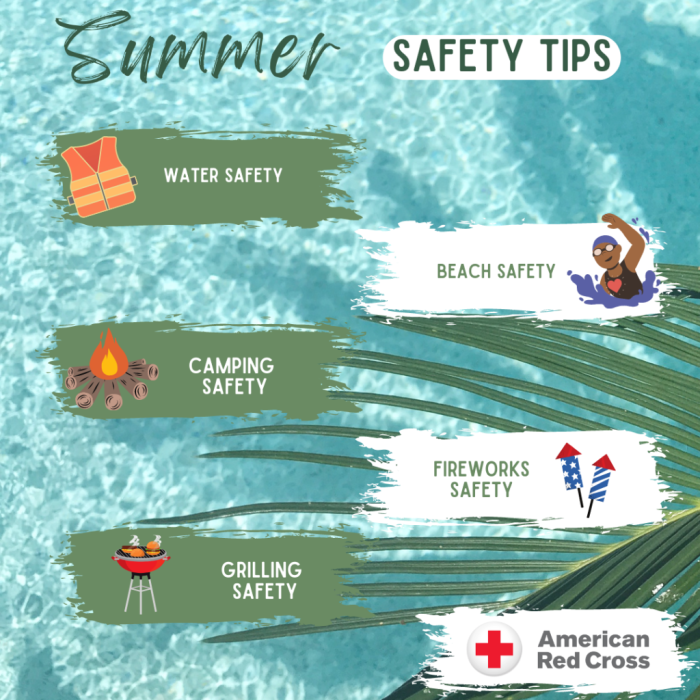
Summer Safety Tips
from the American Red Cross
Water Safety
Every day, an average of 11 people die in the U.S. from unintentional drowning — and one in five of those are children 14 or younger, according to the Centers for Disease Control and Prevention (CDC). The Red Cross wants everyone to know critical safety knowledge and skills that could save your life in and around the water. We encourage families to build confidence in the water by learning to be safe, making good choices, learning to swim, and how to handle emergencies.
- Preventing unsupervised access to water, providing constant, active adult supervision, and knowing how to swim are critical layers of protection to help prevent drowning.
- Classes to learn how to swim are available for both children and adults. Check the map for Learn-to-Swim providers in your community. Furthermore, everyone should learn first aid and CPR to know what to do in an emergency.
- Download the Red Cross Swim app, sponsored by The ZAC Foundation, for safety tips, kid-friendly videos, and activities, and take the free Water Safety for Parents and Caregivers online course in English or in Spanish.
- It’s best to swim in a lifeguarded area. Always designate a “water watcher” whose sole responsibility is to keep a close eye and constant attention on everyone in and around the water until the next water watcher takes over.
- Drowning behavior is typically fast and silent. Unless rescued, a drowning person will last only 20 to 60 seconds before submerging. Reach or throw, don’t go! In the event of an emergency, reach or throw an object to the person in trouble. Don’t go in, or you could become a victim yourself. Test your knowledge!
- It only takes a moment. A child or weak swimmer can drown in the time it takes to reply to a text, check a fishing line, or apply sunscreen. For additional information about staying safe while swimming in larger bodies of water like oceans or lakes, review our beach safety tips below.
Be sure to check out the rest of the tips here.
Original text from the Red Cross website. You can find the article in its entirety here.

